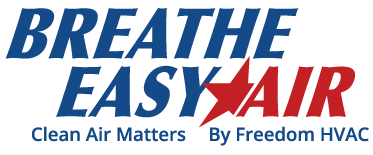Follow These Simple Tips From Your Friends at Breathe Easy Air

Time to kick back and take advantage of that last-minute beach trip before winter sets in. However, nothing puts a damper on vacation faster than illness. Even if you’re healthy, it’s no fun to watch a family member battle an ongoing cough or sore throat. Make sure your home is protected against bacteria and other airborne particles that cause unpleasant symptoms, so you and your family can enjoy the last few weeks of summer!
3 Symptoms Of Bacterial Exposure What To Do About Them
Allergies & Asthma
If your air filters are dirty, mold spores and other airborne particles can easily travel through your duct system and into your living space unless prevented by protective products such as a blower ionizer. Because mold and bacteria circulate along with the air you and your family breathe, it is easy to directly inhale these contaminants.
Mold and allergens can result in a runny nose, coughing and watery eyes. Additionally, irritants can significantly worsen symptoms in those with respiratory problems such as asthma. If you do not have asthma, living in a mold-infested home can actually increase your chances of developing it over time as a result of exposure. Many consider allergies and asthma to be more of an annoyance than anything else, but they are chronic and can become dangerous if not addressed properly.
Disease
Because mold is a fungus, it is possible to pass diseases associated with it along to others. While infections can develop from strains that thrive both indoors and out, one of the most concerning strains is called aspergillosis, which grows most comfortably inside. It can cause clots within the lungs, which may result in coughing, fever, chest pain and breathing difficulties.
While breathing in mold spores commonly causes respiratory issues, mycotoxins within mold spores have been linked to some cancers. If you notice any of these symptoms, or observe visible mold in your home, contact a professional who will know how to effectively eliminate these pesky particles.
Respiratory and Sinus Issues
Along with allergies and asthma, mold and bacteria exposure can trigger a plethora of other symptoms including:
- Headaches.
- Chest tightness.
- Shortness of breath.
- Upper respiratory tract symptoms.
- Hay fever.
- Wheezing.
Due to various studies confirming the link between bacteria and mold growth and respiratory complications, damp interior areas are classified as a public health problem that must be resolved as soon as possible. However, it is best to use preventional methods, such as a growth inhibitor, to keep mold and bacteria from invading your home in the first place!
If you suspect your home may be harboring mold and harmful bacteria, contact us to learn how the Breathe Easy Air Package can protect your family from bacteria, mold, allergens and any other air contaminant you can think of. We would be happy to help in any way we can!
